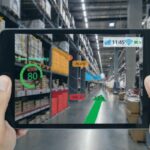Introduction to IoT in Education
The Internet of Things (IoT) has been a game-changer in many sectors, and education is no exception. But what exactly is IoT, and how does it play a role in education?
The Concept of IoT
IoT refers to the network of physical devices, vehicles, appliances, and other items embedded with sensors, software, and network connectivity, which enables these objects to connect and exchange data. This interconnection via the Internet results in efficiency improvements, economic benefits, and reduced human exertions.
The Role of IoT in Education
In the context of education, IoT can provide a multitude of benefits, from enhancing the learning experience to improving administrative efficiency. It can transform traditional classrooms into dynamic learning environments, fostering collaboration, creativity, and critical thinking.
The Impact of IoT on Learning Experience
IoT has the potential to revolutionize the learning experience in several ways.
Personalized Learning
IoT enables personalized learning by allowing educators to tailor instruction based on individual learning styles and pace. For instance, smart devices can track a student’s performance and adapt content to meet their specific needs.
Enhanced Engagement
IoT can also enhance student engagement. Interactive whiteboards, digital textbooks, and virtual reality experiences make learning more interactive and engaging, thereby increasing student participation and retention.
Real-Time Monitoring
With IoT, teachers can monitor student progress in real-time, providing immediate feedback and adjusting lessons as needed. This real-time monitoring can help identify struggling students early and provide them with the necessary support.
Applications of IoT in Education
IoT has numerous applications in the education sector.
Smart Classrooms
Smart classrooms equipped with IoT devices can foster a more interactive and engaging learning environment. For example, smart boards can connect to the Internet and display multimedia content, enhancing the teaching and learning process.
Safety and Security
IoT can also enhance safety and security in schools. For instance, connected cameras can monitor school premises, while smart ID cards can track student and staff movements.
Administrative Efficiency
IoT can streamline administrative tasks, such as attendance tracking and energy management, freeing up time for educators to focus on teaching.
Challenges and Solutions
Despite its potential, IoT in education also presents challenges.
Privacy and Security Concerns
Privacy and security are major concerns in IoT. Schools must ensure that student data is protected and that IoT devices are secure from cyber threats. This requires robust security measures and clear privacy policies.
Infrastructure and Investment
Implementing IoT requires significant investment in infrastructure and technology. Schools must also ensure that staff are trained to use and maintain IoT devices.
The Future of IoT in Education
Despite these challenges, the future of IoT in education looks promising. As technology continues to evolve, we can expect to see even more innovative applications of IoT in the classroom, further transforming the learning experience.
Conclusion
IoT is undoubtedly transforming education, enhancing the learning experience, and streamlining administrative tasks. While challenges exist, the potential benefits of IoT in education make it a worthwhile investment. Investing in IoT stocks offers a world of opportunities.
FAQs
- What is IoT?
IoT, or Internet of Things, refers to the network of physical devices connected via the Internet, enabling these devices to exchange data. - How does IoT enhance the learning experience?
IoT enhances the learning experience by enabling personalized learning, enhancing student engagement, and allowing real-time monitoring of student progress. - What are some applications of IoT in education?
IoT has numerous applications in education, including smart classrooms, safety and security, and administrative efficiency. - What are the challenges of implementing IoT in education?
Challenges of implementing IoT in education include privacy and security concerns and the need for significant investment in infrastructure and technology. - What is the future of IoT in education?
The future of IoT in education looks promising, with the potential for even more innovative applications as technology continues to evolve.







